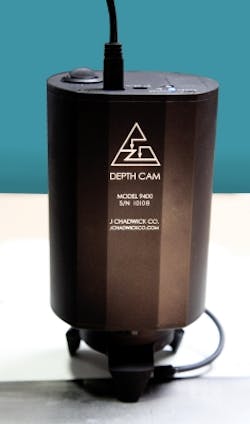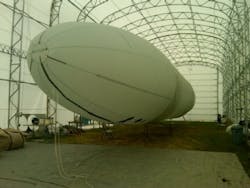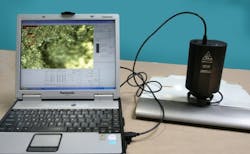New generation of optical micrometers provide more accurate measurement of surface defects on critical parts
By Jim McMahon
Whether it is scratches on a helicopter's rotor blades or on the fuselage skin of an aircraft, or corrosion pitting on industrial couplings, castings, transmissions, or engines, it is critical to evaluate the severity of mechanical damage to stress-bearing parts. These surface defects represent stress concentrations which are more susceptible to failure than the other areas of the component.
Very specific maximum allowances often apply to surface defects, which are essential to determine whether or not a part should be kept in service. To repair or replace the part can have significant structural and financial impact. For example, a helicopter's mast, which connects the chopper's motor to the main rotor, has a defect depth allowance of .012 to .015 of an inch.
If the depth of the defect exceeds those parameters, then it is at risk of breaking and must be replaced. But replacing parts can be a very expensive proposition. In the case of helicopters, masts can cost as much as $25,000 to replace.
Careful visual inspection should, therefore, be standard protocol for any force-absorbing component that exhibits scratches, blemishes or corrosion pits.
Handheld Optical Micrometers
The portable optical micrometer has long been the tool of choice to measure the depth of these defects, from the surface to the bottom of the depression, thereby determining the severity of mechanical damage.
Optical micrometers are portable microscopes specifically designed for measuring depth. They are used for measuring three-dimensional (3D) relief along the z-axis within any x-y field of view, and they accomplish this by measuring the difference in depth between any two focal planes. The instrument is focused on a region of interest and set to zero. Then as a second region is brought into focus, depth is shown on a digital display.
To find out more about Lincoln Laser, contact Michael S. Adkins, Vice President Sales, Lincoln Laser Company; 234 East Mohave, Phoenix, AZ 85004; Phone 602-257-0407, Fax 602-257-0728; [email protected]; www.lincolnlaser.com
To reach the J.Chadwick Company, contact John Chadwick, President; 1005 South Mountain Avenue, Monrovia, CA 91016; Phone 626-358-9955, Fax 626-358-1448; email [email protected]; www.jchadwickco.com


